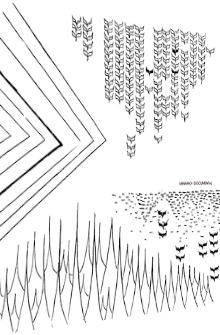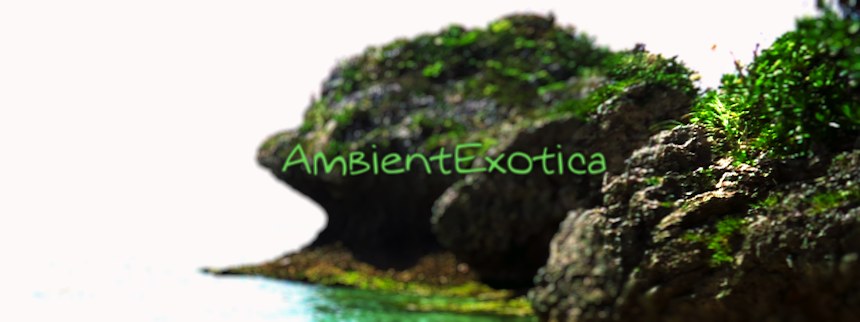
Minamo
Documental
2011
The Tokyo-based electronic Jazz quartet Minamo is one of my favorite Japanese acts that merges clearly improvised melodies and accidental sound fragments with Glitch structures and Ambient synthscapes, i.e. the very essences and genres that capture my heart time and again. Glitchmeister Keiichi Sugimoto and his team of Namiko Sasamoto, Yuichiro Iwashita and Tetsuro Yasunaga come up with dreamy compositions that are at times convoluted but never overly crackling or dissonant as like-minded acts like Computer Soup or the Kammerflimmer Kollektief, for instance. The five tracks of Minamo's latest album Documental, released in 2011, focus even more on the organic side of their sound than all the previous albums. Improvisation is yet again a driving factor, but it is the overly joyful mood that is all the more surprising. Given the boundaries of Jazz-inspired Ambient music, you cannot expect thick, encapsulating synth washes; the emotions of joy and contentment are achieved differently here, mainly through sun-soaked guitar melodies and the respective reactions on the piano. The fragile but swirling synth shapes in the background round off each composition without distracting from the melodies.
The opener Draw The Line is a 10+ minutes long composition that intertwines four devices throughout its runtime: warm piano chords, punchy guitar strings, whirring static noise backings and the frosty fragility of a sustained aerial synth. The implied credo of Minamo, "beauty through reduction," works especially well here. The mood is entirely positive and mellifluous, and these emotions are caused by the spartan but boldly harmonious setup. The euphony is the most important factor here that fends off melancholic moments in favor of presenting a Sunday afternoon nostalgia that is way more revitalizing than saddening. The interplay between the piano and the string melodies is gorgeous, and it is due to missing beats and the thin synth layer that they can shine, pulsate and coruscate incessantly. A strong track for fans of melodious Glitch tunes. Bound Letters builds on these positive moods, but boosts the icy aspects further with shedloads of scintillating bells whose short sustain is complemented by the occasional pulses of wood sticks and brightly-blue shimmering vibraphone droplets. The warped polyphony of the filtered Middle Eastern-styled guitar boosts the warmth of the track even further despite the dominance of the clinging bells. The strings are rather thin on their own, but since they're tripled, they merge, meet and depart by chance, making this yet another soothing track that relies on the improvisational skills of all four musicians involved.
Dusted Shelf at first delivers more of the same guitar twangs and spectral Glitch streams that sound like braking trains, but adds deeply droning synth washes as a remarkable counterpart to the album's endemic glint. While I find the guitar bits a bit too jumpy and loud in the first minutes, things very much improve in the second half of the track: glockenspiel sparkles and the beautiful high notes of the piano together with the backwards-played guitar dreaminess create a mellowly pulsating flow with positively tranquilizing qualities, putting the ambience into the limelight rather than the incisiveness of the guitar strings. Handbook enhances the quiescence and calmness even more, harking back to the opening track Draw The Line. Piano chords are the base frame, but it is the juxtaposition of tremoling clarinet gusts with Oval-esque Glitch jitters that make it the most experimental track on the album. This means that the beauty of the piano is a constant counterpoint to the often times cacophonous clarinet and the accompanying Glitch noises. This is a track for skilled listeners and clarinet lovers. The last track is called Paperweight and places slowly meandering, sizzling-hot guitar pluckings with a rhythmical one-note piano pulse and traversing violin strings. The mood shifts from the previous tracks, as it seems to depict the pleasant anticipation of something important. The last third of Paperweight sees this setting complemented by the glowing monotony of a synth stream and lively glockenspiel layers. With this mood intact, the album ends.
Documental is all in all one of these dreamy albums that realizes its calm lavishness due to the purposeful reduction of instruments and moods. String instruments, mallet instruments, a piano next to a clarinet and a synthesizer are the ingredients that form this intimate concoction of peace. Instead of relying on extravagant synth washes, Minamo rely on team play and improvisation, thus creating a pulsating flow of warmth. The Glitch side of the album is mostly reduced, and if crackles or streams of static noise occur, they are by their very nature glacial, but definitely harmonious. Handbook is the only track that breaks the euphonious boundaries with the use of a prominent clarinet and harsher Glitch bits, but apart from this exception, every track is warm and cozy. Pop Ambient fans will probably dismiss the album due to it's rather complex ambience, but fans of Oval, Microstoria and the jazzier side of the Ambient genre who don't mind the focus on real instruments and improvisational structures should check out the works of Minamo, of which Documental is the latest.
Ambient Review 093: Minamo – Documental (2011). Originally published on Jul. 11, 2012 at AmbientExotica.com.
